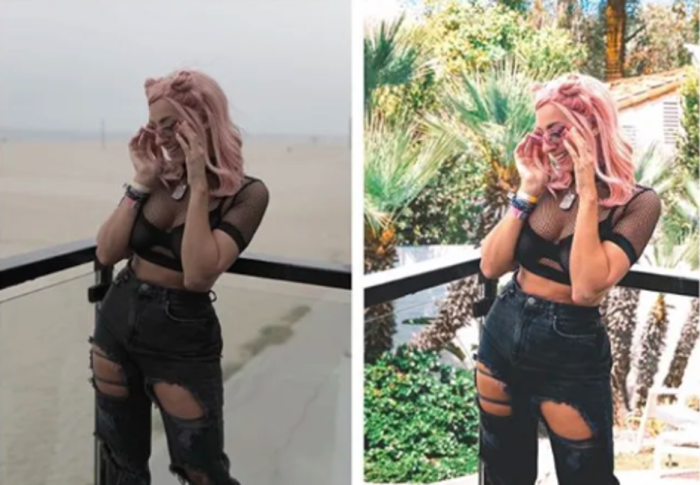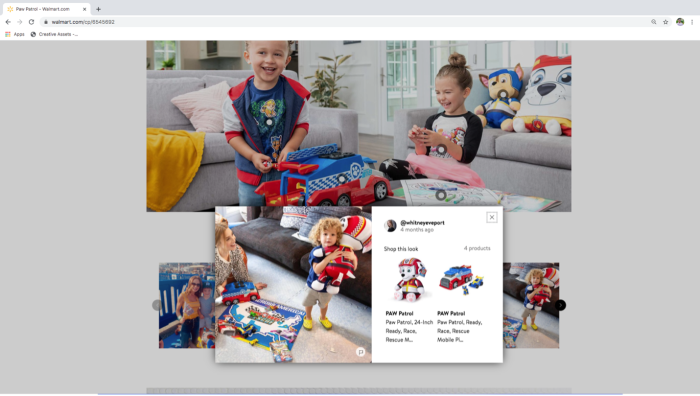This quarter, we explore culture and content through the lens of the comfort influ...
Read MoreStephanie is a veteran influencer marketing leader and strategist who believes that human-to-human marketing should educate, inspire, innovate, ideate and collaborate, allowing brands to enter the intimate conversation between influencers and their communities. She has previously built strategies across a myriad of clients and industries from tech to fashion, from CPG to Entertainment and everything in between. Stephanie’s mission is to shape the next generation influencer marketing in a way that merges technologies with human creativity, authenticity, emotion, impact and purpose.
The ad from my childhood that stays with me…
In the 90s, I was obsessed with Nickelodeon Magazine – the now defunct children’s magazine inspired by children’s TV network Nickelodeon. As a child, I would tell my parents I wanted Nickelodeon Magazine because that’s what the commercial told me to do (6 issues for $9.97… crazy that it worked!). It would play constantly on TV and I don’t know that it made me in any way, but it sticks out in my head as something to look back on because of the way it advertised to kids and when I work on kids campaigns it’s always a kind of magic I think about.
The web platform that made me want to get into the industry…
A career in advertising wasn’t a path I always knew I wanted to take, but as a child I was interested in putting together slideshows of pictures I’d taken on my camera, setting it to music and experimenting with web design and graphics. When I started my career, it was around the time that Facebook had expanded beyond being just a social network for college kids to open up the platform to everyone, including brands. And now, everything that you can do on Instagram and TikTok plays into those interests I had as a child. In a peculiar and interesting way, it’s like life had its vision for me; I’ve always loved doing this stuff so when social media came about, it was the perfect industry for me to fall into.
The creative work that I keep revisiting…
It was a (now removed) video back in 2019, when YouTube influencer Gabbie Hanna faked her whole presence at Coachella, editing her photos to make it look like she was there when in fact she was at home and it turned out the whole thing was fake.

That was such a turning point in my career because, first of all, it seemed crazy to me that we’re at a point where you needed to be seen somewhere to be considered an influencer. Influencer had almost migrated into this celebrity mindset and culture where it became so much about status over actual influence. This video was a testament to how things were starting to get out of control and how cultural perception of what an influencer was and did was being taken in a different direction than how it originated and what made it so special. That really stuck out to me and what I was doing with brands because it felt like we were being super commercial and just faking everything for the sake of an ad, when in fact there was a bigger benefit and purpose to working with influencers that we really got away from. So much of my career now is about designing campaigns that help brands be part of the relationship between influencer and audience, rather than messaging AT them like a billboard does.
My first professional project…
This takes me way back to my days as an intern making Facebook pages for businesses in a downtown area of New Jersey. It was back in college, again when Facebook was starting to take off, and brands and businesses were starting to realize they could have a presence on the platform. Lots of businesses were asking me to create Facebook pages for them – including a family pizza restaurant called Federici’s Family Restaurant where I was offered to be paid in pizza. As a student, how could I say no to that!
The piece of work that made me so angry that I vowed to never make anything like *that*…
The Coachella example I mentioned earlier was a real turning point for me as I just couldn’t believe how everything was faked! After that, I would scroll through my Instagram and the very inauthentic influencer partnerships became super apparent to me. This is not how humans are supposed to be – they are not “walking ads” and there are better ways to advertise products and services with humans – I wanted to capture that.
Talk to us about word-of-mouth recommendations and use our lives and stories to tell interesting stories for brands – not just spitting out ad language and having people pose with products. It’s not well done, it’s not creative and it’s boring. There’s so much more in their community that you could be doing rather than giving audiences a transactional experience that is not relatable. That was a real inflection point because it was taking what made influencer marketing so special from the beginning and turning it into something that felt redundant and boring. People weren’t doing it right and they weren’t making distinctions in how we used humans to advertise.
The piece of work that still makes me jealous…
It’s not necessarily one campaign but there are certain brands I look up to because they are just doing it right with influencers. Vital Proteins is one – really interesting how they have used influencers in the health community as a resource to teach people about their bodies and health. Everything feels super organic which was such a contrast to how I was feeling about other ads at the time. Instead of just trying to sell the product, influencers were showing consumers how to use them and what to do with them. Siete Family Foods is another example in the health category that is making advertising and marketing fun with IRL experiential activations. The way they use influencers to lead community events creates a real family feel and is another example of building authentic communities.
Vital Proteins – ‘Every Moment is Vital’ campaign featuring Chase Tucker / Photo credit: Cass Bird
The creative project that changed my career…
It all goes back to the Coachella story again; I was at a point in my career where I almost quit my job because I was becoming so frustrated with the influencer industry feeling fake and like it doing anything “good”. Or a lot of brands were so focused on immediate results and you don’t always see results immediately – so it was getting harder to feel like what we did was impactful to brands. But it was at this time that an RFP came to me for a Paw Patrol campaign. It was the first time I’d really sat down and thought about how we could do something better and different than just relaying the message that these toys were available at Walmart.
So, I sat down (as a 30-year-old) and watched several episodes of the kids show, then spoke to some parents I knew to find out what they and their kids liked about the show – it all boiled down to community. So instead of just supporting the launch of these products, we developed a campaign where kids had to do a good community-focused deed (like the pups in the show) in order to be rewarded with the new toys in Walmart. It aligned with a lot of the themes of the show and was wildly successful.
I had so much faith in the idea and not only was it good to see something good come out of influencer content, the parents and kids loved it and the fact that we were able to put the brand, the show and the retailer in that conversation is how you should be doing influencer marketing. That’s the real power of what influencers can do – they’re able to change behaviors and lead by example. That was my favorite inflection point of my career because it really crystalized for me how much audiences just wanted to be inspired, not sold. I started designing campaigns where we did more “cool stuff” that is meaningful and authentic.

And I still get to these inflection points today with the brands I’m working with; always thinking about authenticity and how to make things that are easily able to feel not real, feel real. How do I make this feel more personal? How do I inspire? How do we think outside the box? It’s reshaped how I think about influencer campaigns and what we do.
The work that I’m proudest of…
The Paw Patrol campaign was a real turning point for me and I’m proud of all the work I’ve done since then because it forced me to think about changing behavior and how we can do good, thinking beyond just influencer. Where I am now in my role at ITB Worldwide, I have the opportunity to be involved in campaigns from the pitch through to execution to ensure that we’re always looking at new and innovative ways to use influencers in a meaningful way and pushing the boundaries of what we’re doing; how to be authentic, real and how talent and influencers fit into the big picture of not only how the brand activates but who a brand is.
The recent project I was involved in that excited me the most…
We’ve been doing some great work with H&M driving awareness for its childrenswear range. The latest Back to School campaign allowed us to really think outside the box to drive awareness at one of the most important times of the retail calendar. We were able to take traditional ads and bring a campaign to life with influencers creating content beyond traditional channels, while balancing that with effectiveness goals for the brand.
This involved an influencer strategy as a CPM model, a new avenue/way-in to sell a traditional media buy that’s typically reserved for ad placements outside of influencer channels (think display ads, mobile, TV, search). By using influencers in this capacity, we were able to identify cost efficiencies and position the influencers as the creative and production team, the advertising channel/platform, and further amplify the creative through targeted ad spend.
It’s always great fun to explore these new ways to utilize influence, creating authentic content that tells a story, all while ensuring that the brand values shine through.
This article was originally written for LBB Online – which you can view here.




